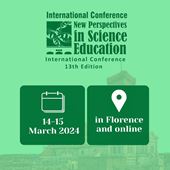Carbon Dynamics in Terrestrial Ecosystems
Snježana Marković-Zoraja, Dubovac Primary School, Karlovac (Croatia)
Kristina Fratrović, Dubovac Primary school, Karlovac (Croatia)
Abstract
This learning scenario show the interdisciplinary approach integrating chemistry, biology, and mathematics and classes take place in school park. This approach empowers students to explore real-world problems from multiple perspectives, encouraging creativity, collaboration and critical thinking¹. An 8th-grade, the class focused on the carbon cycle in terrestrial ecosystem. Students engaged in active learning methods, including games, measurement, and analysis, used mobile applications. Working in groups, they addressed questions about carbon’s presence, pathways, and transformations in the environment. Students analysed a carbon cycle diagram in terrestrial ecosystems, including autotrophs, heterotrophs, and saprotrophs², and watched animations. They defined concepts such as carbon reservoirs and transfers, created diagrams, and converted data between different representations³.Through a card game, students constructed a schematic representation of the carbon cycle, with cards symbolizing reservoirs and arrows representing transfers³. Practical work involved biometry tree measurements to calculate stored carbon and tree age. Measurements included tree circumference, height (using the pencil method and the GLOBE Observer app), and diameter. Biomass and stored carbon calculations followed specific formulas⁴:
Tree diameter at breast height – diameter (d), d = O/π
Fresh biomass of the tree – green weight (GW) /kg,
GW = 0.0346 ∙ d² ∙ h, for d > 28 cm
GW = 0.0577 ∙ d² ∙ h, for d < 28 cm
Dry biomass – dry weight (DW) /kg, DW = GW/2
Stored carbon – carbon storage (CC) /kg, CC = DW/2
Using Plant Net, students identified tree species and estimated age based on circumference and growth rates⁵. Comparisons revealed older trees store significantly more carbon. Students proposed solutions for reducing CO₂ and explored practical applications of these methods. The format is adaptable to various age groups, environments, and measurement methods.
Keywords: carbon cycle, terrestrial ecosystems,biometry, geometry, applications
REFERENCES:
[1] S. Berak. Kalibar 1/2 (2020) 12-17. Available from:
[2] EarthLabs, Carbon on the Move! 2A: A Forest Carbon Cycle (2011)
Available from: https://serc.carleton.edu/eslabs/carbon/2a.html
[3] The GLOBE Program, Carbon Cycle Adventure Story Activity -7 (2017) 1-7
Available from: https://www.globe.gov/documents/355050/8cf263cb-436c-4e29-851f-678a6cfb6b2d
[4] Amgueddfa Cymru, Measuring Carbon In Trees:The Urban Nature Project (2018)
Available from: https://museum.wales/media/52595/measuring-carbon-in-trees.pdf
[5] Natural resources Wales, Carbon storage calculator: worksheet,
Available from: https://cdn.naturalresources.wales/media/687190/eng-worksheet-carbon-storage-calculator.pdf
 New Perspectives in Science Education
New Perspectives in Science Education





























